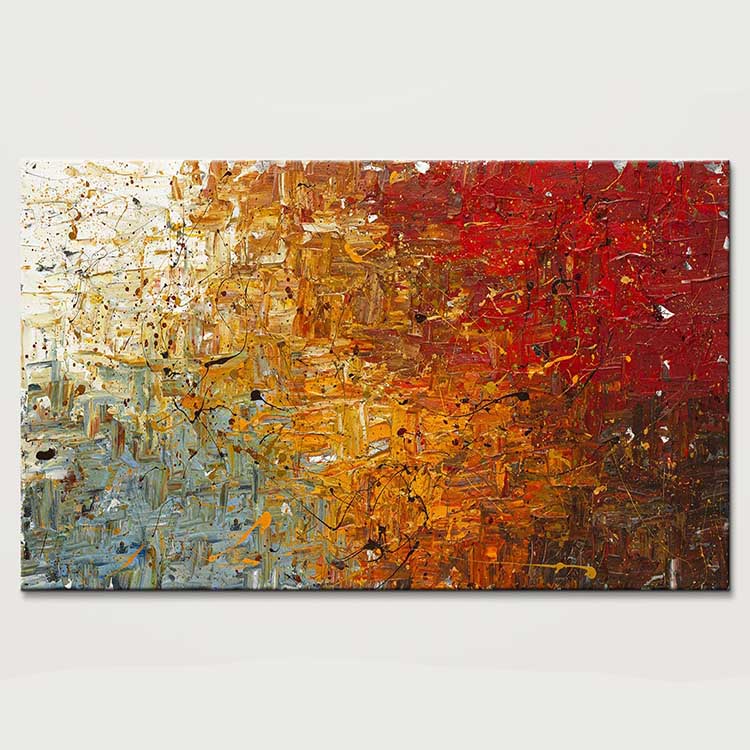In this article, we want to talk about What are the Different Types of Art Galleries? . Join us .

1. The Commercial Art Gallery
The most common type of art gallery is the commercial art gallery. Although the word ‘commercial’ may have a negative connotation, as if they only care about the money, this is in fact the ‘best’ type of art gallery there is for artists or collectors, playing a crucial role in the art world.
With commercial art galleries, the gallery collaborates with several artists, agreeing to represent and support them. This means the gallery commits to showcase, promote, sell and distribute the artworks of the artist in question. Doing so, the artist is able to make a living and build his career, collectors base and artist resume.
In return, the gallery earns money on a commission basis with the sales of the artworks. Doing so, the gallery is motivated to do the best work possible for the artist, pushing their career and sales. A win-win! The gallery makes money, and so does the artist. The better the artists are promoted are grow their careers, the better the reputation of the gallery. In a nutshell, what is good for the artists is good for the gallery.
2. Mega-Galleries
Mega-galleries are commercial art galleries who continued to grow, becoming an industry leading actor in not only the gallery industry, but in the entire art world. In our article on the Top 10 of the Biggest Art Galleries in the World, we have defined the ‘mega-gallery’ as a highly influential art gallery with multiple locations and a number of employees and square meters of exhibition space similar to major museum institutions.
The mega-galleries are the top layer of the gallery industry. They represent only the very best artists in the world and do not only sell their artworks, they also advise institutions, events and corporations in the art world.
3. Vanity Art Galleries
Up next, we have Vanity art galleries. Vanity art galleries are galleries who charge the artists to exhibit and promote their work with the gallery. In essence, I would not call them art galleries as they do not have a curated gallery program.
Although this may seem as an appealing opportunity for artists who are trying to kickstart their career as an artist, I would advise not to work with vanity galleries (make sure to read our article on How To Succeed as a Painter/Artist).
Vanity Galleries almost never have a great reputation in the art world, nor do they have a good clientele or an actual collectors base, hence they do not select artists based upon the quality of the artworks, but based on the size of their wallet.
Most often, they would exhibit anyone and anything who is willing to pay for the exhibition. As a result, it is very unlikely to find genuinely interesting or emerging artists at Vanity galleries. At the same time, they are not motivated to promote and sell the artworks of the artists who decide to collaborate as they have already cashed in on the collaboration.
The gallery invites artists to exhibit with them, which may seem very appealing. But in reality, they squeeze the money from the artist by charging them tremendous amounts of money for the location and promotion services, without actually being motivated to deliver a good service for the artists.
So if one day you receive an invitation to work with an art gallery, think twice when they propose terms in which you need to pay to exhibit, as this might be the wrong way to go.
4. Exhibition Spaces
A fourth type of gallery is actually not really a gallery, rather an exhibition space. In this case, the artist rents an exhibition space in which they can organize their exhibition.
The artist pays rent per day or per week and needs to take care of all the other aspects of the exhibition, such as the supervision, promotion, print work, invitations, et cetera.
Most often, these exhibition spaces are referred to as art galleries, or sometimes even called ‘Gallery X’ or ‘Y Gallery’. However, as there is no curated gallery program and not even a gallery owner, they are simply spaces available for rent suited for organizing art exhibitions.
Doing so, they give the opportunity for the amateur or beginning artists to showcase their works and gather some experience when it comes to exhibiting. However, one can not expect the prestige of a self-organized exhibition in those spaces to be equal in comparison to an exhibition at a ‘real’ art gallery, such as a commercial art gallery.
5. Artist-Run Galleries
We conclude our list of types of art galleries with the artist-run art gallery. The past few decades, we have seen multiple success stories of artist-run galleries, think of Galeria Plan B initiated by Mihai Pop and Adrien Ghenie.
In this case, artists or artist collectives start up a gallery or exhibition space on their own. The most common reason to do this is due to a lack of opportunities to exhibit, as they decide to create a platform for their own.
These types of initiative take courage to realize and sometimes it is a bit frowned upon. However, as the aforementioned case study illustrates, an artist-run art gallery can be highly successful and have as great a reputation as a commercial art gallery.
Eventually, if the artist-run gallery gets on well, they will transform slowly but surely more towards a commercial art gallery in order to continue to grow their activities.




